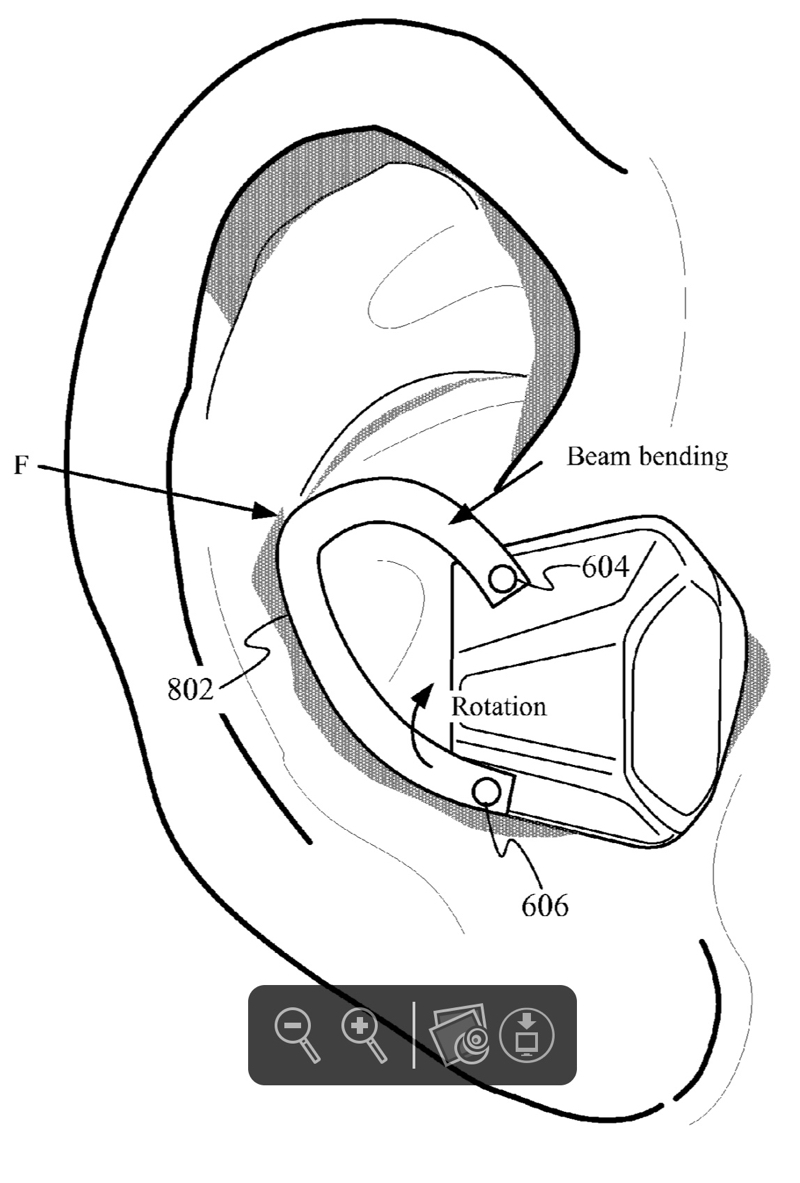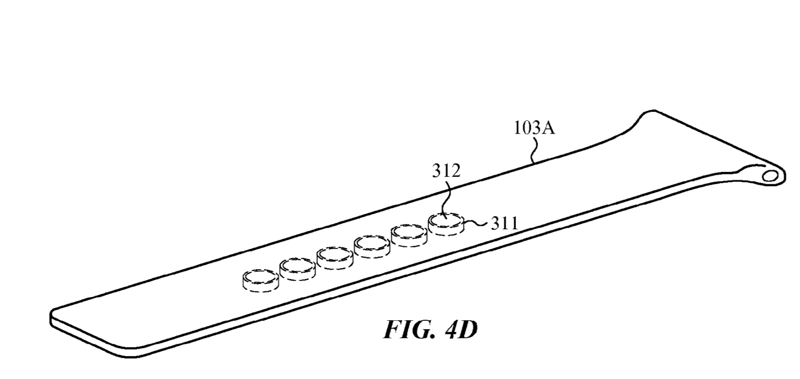Apple was granted three patents today that shows it plans to beef up the features of its AirPods wireless earbuds. Patents 20170078781, 20170078780 and 20170078785 are for “earbuds with biometric sensing.”
The patents involve earbuds configured with one or more biometric sensors. At least one of the biometric sensors is configured to be pressed up against a portion of the tragus — a small pointed eminence of the external ear — for making biometric measurements.

In some embodiments, the housing of the earbud can be symmetric so that the earbud can be worn interchangeably in either a left or a right ear of a user. In such an embodiment, the earbud can include a sensor and circuitry configured to determine and alter operation of the earbud in accordance to which ear the earbud is determined to be sitting in.
In the patent filings, Apple notes that biometric sensors often need to be in close or even direct contact with the skin to properly measure and track biometric parameters along the lines of heart rate, VO.sub.2, and core temperature. Requiring a user to place a sensor in direct contact with the skin to track these types of biometric data can be overly burdensome, making adoption of the biometric tracking more difficult. Apple says that mechanisms for unobtrusively measuring biometric parameters are “highly desirable” and obviously considers AirPods a means to this end.
Apple also wants to beef up the health/fitness features of the Apple Watch. The company has applied for a (number 20170074897) patent for “calculating an estimate of wind resistance experienced by a cyclist.” It involves improved techniques and systems are disclosed for determining the components of resistance experienced by a wearer of a wearable device engaged in an activity such as bicycling or running.

In the patent filing, it’s noted thatwearable device can be worn by a person riding a bicycle. A cyclist may wish to receive a measurement or estimate of their power output and/or calories burned while they ride. One way by which power output can be measured is the installation of a power meter onto a bicycle. However, Apple says that such meters require installation and may be expensive.
Another method for estimating power output is to measure the cyclist’s heart rate and generate an estimate of power output based on the heart rate. While inexpensive, heart rate measurements and estimation of cyclist power output based on heart rate can require significant power to operate the sensor, according to Apple.
Another approach is to estimate power output based on distance traveled and/or speed at which that distance is traveled. However, estimation based on these quantities can be inaccurate, Apple notes. The company seems to feel that enhanced Apple Watch features are the answer to these issues.
Speaking of the smartwatch, Apple has also applied for a patent (number 20170071298) for a magnetic band clasp. It involves, as the name implies, an Apple Watch band that secures itself around your wrist magnetically.

Of course, Apple files for — and is granted — lots of patents by the U.S. Patent & Trademark Office. Many are for inventions that never see the light of day. However, you never can tell which ones will materialize in a real product.
